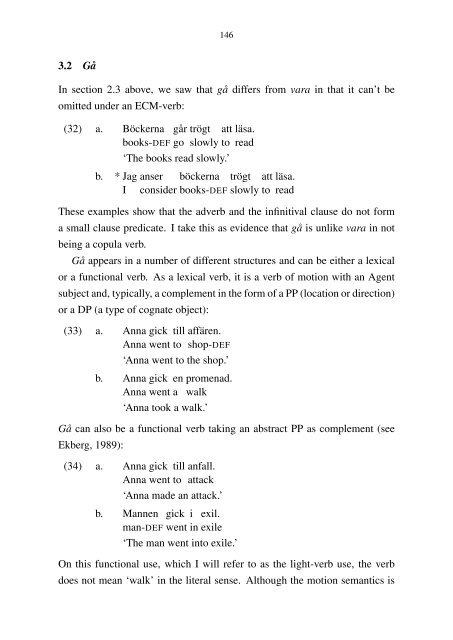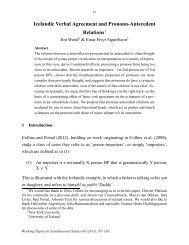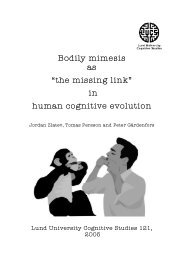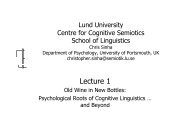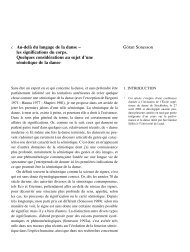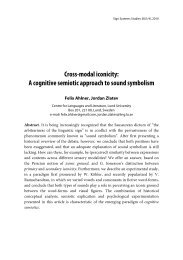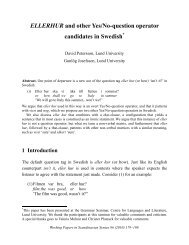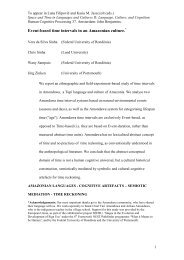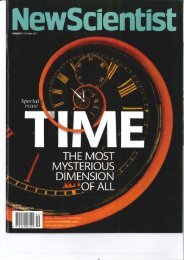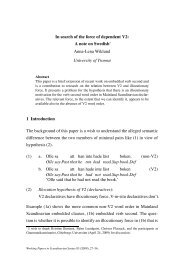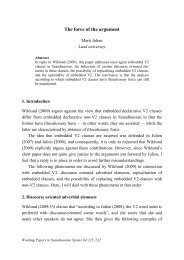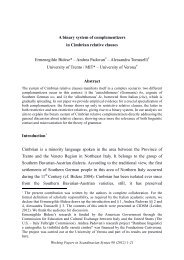Eva Klingvall On non-copula Tough Constructions in Swedish (PDF ...
Eva Klingvall On non-copula Tough Constructions in Swedish (PDF ...
Eva Klingvall On non-copula Tough Constructions in Swedish (PDF ...
Create successful ePaper yourself
Turn your PDF publications into a flip-book with our unique Google optimized e-Paper software.
1463.2 GåIn section 2.3 above, we saw that gå differs from vara <strong>in</strong> that it can’t beomitted under an ECM-verb:(32) a. Böckernab. * JagIbooks-DEFgårgotrögt att läsa.slowly to read‘The books read slowly.’anser böckerna trögt att läsa.consider books-DEF slowly to readThese examples show that the adverb and the <strong>in</strong>f<strong>in</strong>itival clause do not forma small clause predicate. I take this as evidence that gå is unlike vara <strong>in</strong> notbe<strong>in</strong>g a <strong>copula</strong> verb.Gå appears <strong>in</strong> a number of different structures and can be either a lexicalor a functional verb. As a lexical verb, it is a verb of motion with an Agentsubject and, typically, a complement <strong>in</strong> the form of a PP (location or direction)or a DP (a type of cognate object):(33) a. Anna gick till affären.Anna went to shop-DEF‘Anna went to the shop.’b. Anna gick en promenad.Anna went a walk‘Anna took a walk.’Gå can also be a functional verb tak<strong>in</strong>g an abstract PP as complement (seeEkberg, 1989):(34) a. Anna gick till anfall.Anna went to attack‘Anna made an attack.’b. Mannenman-DEFgick i exil.went <strong>in</strong> exile‘The man went <strong>in</strong>to exile.’<strong>On</strong> this functional use, which I will refer to as the light-verb use, the verbdoes not mean ‘walk’ <strong>in</strong> the literal sense. Although the motion semantics is


